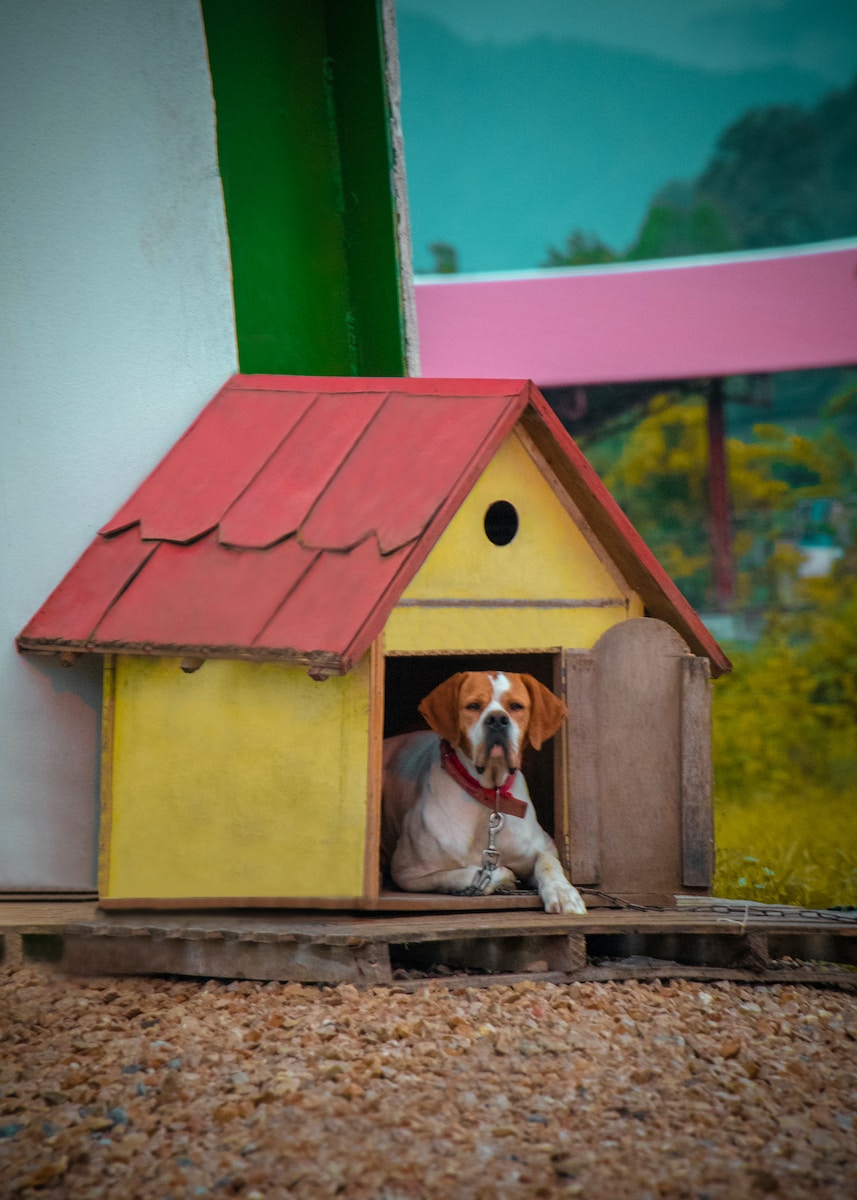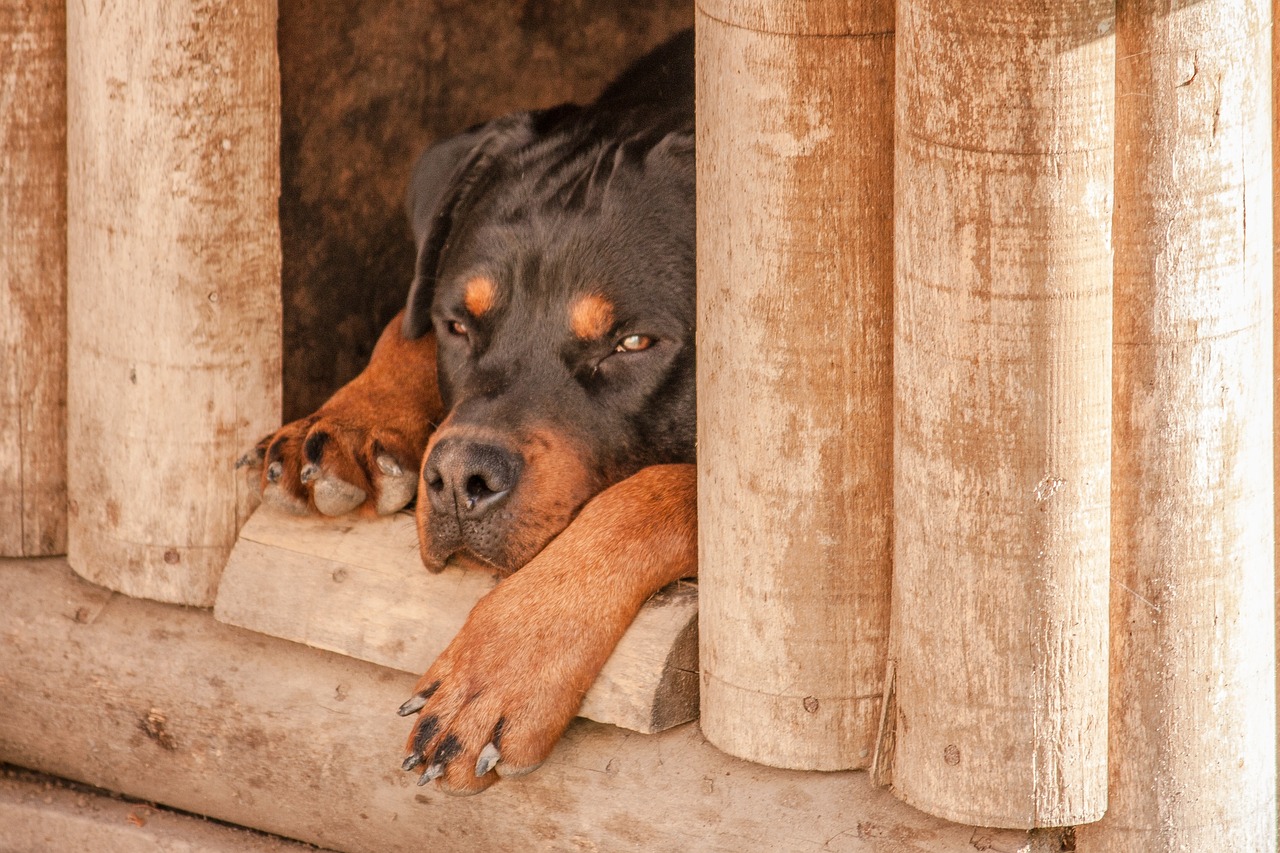Providing our furry friends with their sanctuary is essential because it allows them to take shelter from the elements and comfortably relax. Building a dog house is not only a great way to provide your pet with the perfect space, but it can also be an enjoyable and rewarding DIY project.
Not to mention, a sturdy and well-built dog house can help protect your pet against harsh weather and keep them safe from predators. So, whether you’re a beginner or an experienced DIYer, building a dog house is a project worth undertaking.
When building a dog house, some essential factors exist, such as location, materials, and design. Choosing the right location for the dog house is crucial to ensure it is protected from the elements, and placing it in a spot that allows for proper air circulation is also a must.
Quality materials such as treated wood, asphalt shingles, and galvanized screws are essential for the frame and roof. It’s also essential to elevate the dog house off the ground, which facilitates air circulation and helps prevent moisture buildup
Choose the right location for the dog house to ensure it is protected from the elements
Choosing the right location for your dog’s house is essential to protect them from the elements. The right position will provide your furry friend a comfortable and safe place to relax and sleep away from the wind, sun, rain, snow, and other weather conditions.
Step 1: Consider the climate in your location
When choosing the location for your dog’s house, it’s essential to consider the climate in your area. For instance, if you live in a hot climatic area, you should ensure that the dog house is located in a properly ventilated and shaded spot. If you live in an area that experiences heavy rain or ice during the winter, it’s advisable to position the house away from low-lying areas that may flood.
Step 2: Choose a spot with proper drainage
Ensure that the area for your dog’s house has proper drainage. This will help prevent water and moisture from entering the house, ensuring your pet stays warm and dry.
Step 3: Select a spot that offers protection from strong winds
Strong winds can be extremely uncomfortable for your dog, especially in winter. Choosing a location for the dog’s house that is sheltered from strong winds is essential. Trees, walls, or other structures can shield the house from the wind.

Choosing the right location for your dog’s house is important to protect them from the elements and ensure their comfort. You can follow these steps to choose the right location and keep your furry friend happy and healthy. By selecting a suitable location, you can protect your pet from harsh weather, ensuring they stay healthy and comfortable throughout the year.
Use sturdy materials such as treated wood, asphalt shingles, and galvanized screws for the frame and roof
You should consider the materials you choose when building a sturdy and long-lasting structure. This is especially true when it comes to the frame and roof. You can use various materials, but the following guidelines will help ensure your structure is built to last.
1. Use Treated Wood: Treated wood has been chemically treated to resist rot, decay, and insect damage. This makes it a great choice for the frame and roof of your structure, as it will hold up well over time. You can find treated wood at most home improvement stores.
2. Choose Asphalt Shingles: Asphalt shingles are today’s most common roofing materials. They are affordable, easy to install, and come in various colors and styles. Plus, they are durable and can last up to 20 years or more with proper care.
3. Galvanized Screws: When it comes to fastening the frame and roof together, galvanized screws are the way to go. These screws are coated with zinc, which makes them resistant to rust and corrosion. This means they will hold up well in wet or humid conditions.
4. Consider Adding Insulation: If you plan on using your structure year-round, adding insulation to the roof is a good idea. This will help keep the space warm in the winter and cool in the summer. You can use insulation batts or rolls and ensure they are fitted snuggly to avoid gaps.
5. Regular Maintenance: While using sturdy materials is key, it’s also important to regularly inspect and maintain your structure to ensure it continues to hold up well over time. This includes checking for any signs of wear or damage, cleaning the roof, and resealing gaps or cracks as needed.
The house should be slightly elevated off the ground for air circulation and to prevent moisture from coming in
One of the most important aspects of building a home is ensuring it is constructed to promote longevity and durability. Proper air circulation and moisture control are two key components of this, and one effective way to achieve both is by elevating the house slightly off the ground.
There are a variety of factors that make this a beneficial tactic. Firstly, elevating the house allows air to circulate underneath, which can help regulate temperature and reduce the risk of mold and mildew growth. This is especially important in humid climates where moisture levels can be high.
In addition to preventing moisture buildup, elevating the house can protect against flooding and other water-related damage. The house is less susceptible to water damage from heavy rainfall or flooding when built on a raised platform.
Another important consideration is the type of foundation used when elevating the house. Pier foundations are popular, which involve placing support pillars under the house. These can be made from various materials, including concrete, wood, or steel.
It is also important to consider the amount of elevation required. This will depend on factors such as the slope of the land, the likelihood of flooding, and the desired amount of air circulation. A trusted contractor can help determine the ideal height for your specific situation.
Finally, it is worth noting that while elevating the house can be beneficial, it is not always necessary or feasible. In situations where the land is flat, or the cost of elevating the house is too high, alternative measures such as installing drainage systems or using moisture-resistant building materials may be more appropriate.
As a result of elevating a house off the ground, many benefits can be realized regarding air circulation and moisture control. By considering factors such as foundation type, elevation height, and the specific needs of your property, you can help ensure your home stands the test of time.
Conclusion
If you want your dog house to ensure the happiness and health of your furry friend, make sure it is built in the right location, choose sturdy materials, and ensure that it is ventilated properly. Following the outline will allow you to build a comfortable, safe space for your dog to retreat to during harsh weather conditions.
This improves your dog’s quality of life and provides peace of mind for pet owners knowing their dog is safe and protected. With a little research and effort, building a dog house can be a fun and rewarding project for any pet owner.

